Coșul tău
Noutățile companiei
Noutăți E-Malt
India: Pernod Ricard retains position as India�s largest alcoholic beverage maker by value
China: Tsingtao Brewery focusing on portfolio optimization and channel expansion
USA, MA: Wandering Star Craft Brewery�s time in the Berkshires comes to an end
USA, NY: Fifth Frame Brewing Co. announces abrupt and immediate closure
Malțurile noastre
Hameiurile noastre
Hameiuri noi
Drojdiile noastre
Condimentele noastre
Zahărul nostru
Capacele noastre
-
 Kegcaps 74 mm, Albe 86 Flatfitting A-type (700/cutie)
Adaugă în coş
Kegcaps 74 mm, Albe 86 Flatfitting A-type (700/cutie)
Adaugă în coş
-
 Capace 26mm TFS-PVC Free, Purple Opaque col. 2274 (10000/cutie)
Adaugă în coş
Capace 26mm TFS-PVC Free, Purple Opaque col. 2274 (10000/cutie)
Adaugă în coş
-
 Kegcaps 64 mm, Orange 43 Sankey S-type (EU) (1000/cutie)
Adaugă în coş
Kegcaps 64 mm, Orange 43 Sankey S-type (EU) (1000/cutie)
Adaugă în coş
-
 Kegcaps 74 mm, Negru 91 Flatfitting A-type (700/cutie)
Adaugă în coş
Kegcaps 74 mm, Negru 91 Flatfitting A-type (700/cutie)
Adaugă în coş
-
 CC29mm TFS-PVC Free, Albastru without oxygen scav.(7500/cutie)
Adaugă în coş
CC29mm TFS-PVC Free, Albastru without oxygen scav.(7500/cutie)
Adaugă în coş
Certificate
Sugestie
 World: Rusts found 'unlikely' to develop strob resistance
World: Rusts found 'unlikely' to develop strob resistance
Barley net blotch and cereal rust diseases appear unlikely to be able to develop the same type of total resistance to strobilurin fungicides as Septoria tritici, according to research carried out by the Universities of Basel and Turin in association with Syngenta.
The discovery should mean strobilurin fungicides, such as Amistar (azoxystrobin) continue to give good control of those diseases for the foreseeable future, Syngenta's David Ranner says.
The reason is to do with differences in the DNA make-up of each fungus's cytochrome b gene. Strobilurins block the fungus's mitochondrial respiration by binding to cytochrome b.
A mutation changing the DNA sequence from glycine to alanine at amino acid 143 (G143A) in the cytochrome b gene prevents strobilurins binding causing the fungi to become resistant to the chemical, Mr Ranner explains.
"The mutation has been reported in septoria and powdery mildew." The question is whether such a mutation could also occur in other fungi; is it just a matter of time before resistance develops, he says. To find out researchers sequenced the DNA code for cytochrome b in a wide range of fungal pathogens, and found it varied in size between even closely related fungi. "The cause is sequences of DNA, called introns, within the gene, that are not needed for cytochrome b protein function."
Normally these introns are removed when the DNA is translated into cytochrome b protein, with a particular sequence of DNA just before the intron sequence indicating what bits need to be removed, he says.
What the researchers discovered was in fungi such as rusts is that an intron starts immediately after the 143 position.
"It means if the mutation does occur it prevents the intron being removed [because the removal code is corrupted] so it can't make the cytochrome b protein properly and the fungus dies anyway, and of course, without the mutation the fungus continues to be susceptible to strobilurins. "It is a bit of a nightmare if you are a fungus."
So far, all the diseases that have become totally resistant to strobilurins do not have an intron immediately after the 143 position, while fungi, such as rusts, net blotch and early blight, which haven't succumbed to the G143A resistance, do, he says.
The discovery doesn't totally rule out resistance developing, he notes. "There are other mutations, such as F129L, but, so far, these only result in partial resistance."
Înapoi


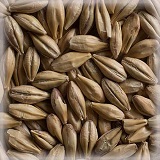
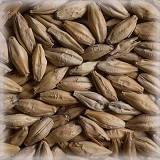
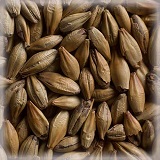
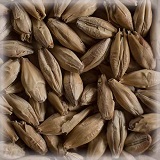
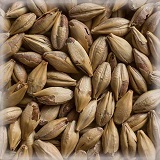



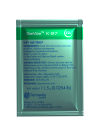

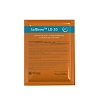
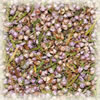
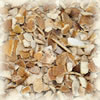
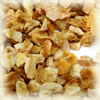
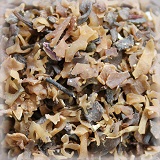
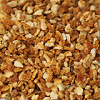




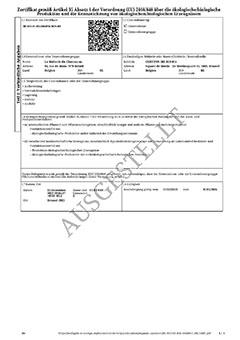 Bio-Zertifikat DE - Juli 2025-März 2028
Bio-Zertifikat DE - Juli 2025-März 2028
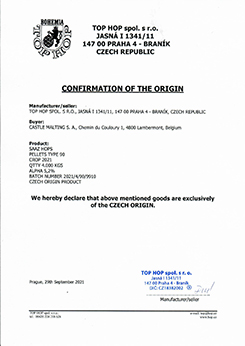 Top Hop - Confirmation of the Origin 2021
Top Hop - Confirmation of the Origin 2021
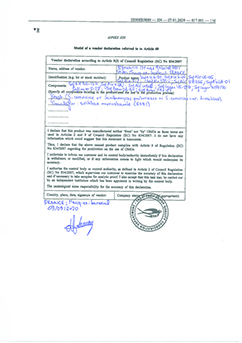 Fermentis GMO-free Declaration
Fermentis GMO-free Declaration
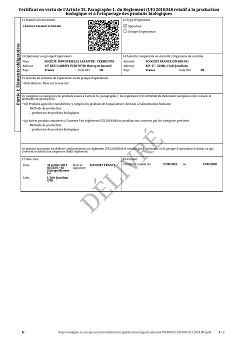 Fermentis - Certificate ECOCERT Bio production et produits 2022-2026
Fermentis - Certificate ECOCERT Bio production et produits 2022-2026
 SAS Biohop Organic certificate 2023-2025
SAS Biohop Organic certificate 2023-2025






